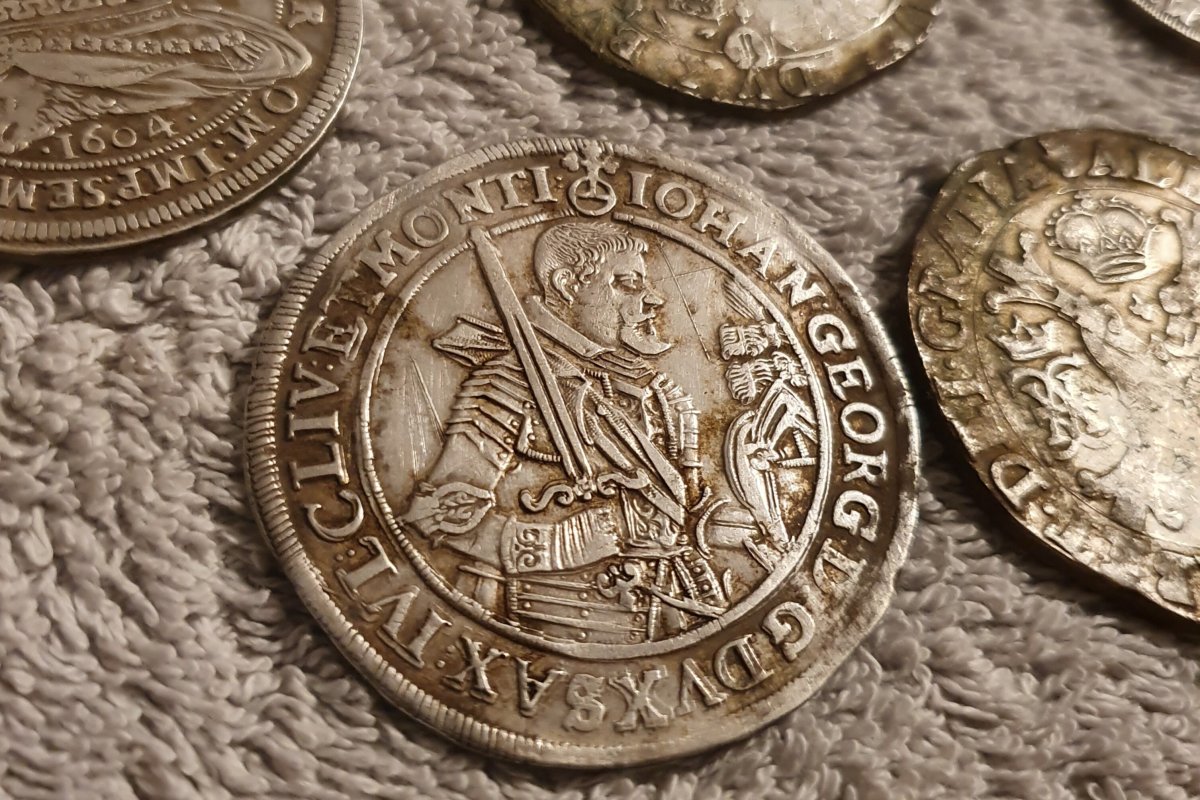A father-and-son metal detecting duo discovered a "priceless" treasure trove of 17 rare historic coins.
Sławomir and Szymon Milewscy found the coins near Pomiechówek, a village in the Mazovia region of east-central Poland.
The silver coins, dated to the 16th and 17th centuries, came to light during a search by the Polish Association of Prospectors in collaboration with the Triglav Historical and Research Association. The search aimed to uncover evidence of a road from the time of the Roman Empire, but the effort resulted in a very different kind of discovery.
"We have a treasure. We didn't expect this at all," the prospectors association said in a Facebook post on November 3.

"We will start with the historical value—this one for us is priceless," the association said in another post on November 4.
While Piotr Duda, an archaeologist from the Triglav Historical and Research Association, also noted that the coins' historical value is "indescribable," their material value is estimated to be around half a million Polish zlotys—equivalent to roughly $122,000.
"This is probably one of the largest treasures of this type discovered so far in Poland, and certainly in Mazovia. Yes, in recent years, deposits of coins from various historical eras have emerged, but not from the 16th and 17th centuries," Duda told Science in Poland.
"We knew that these were silver coins and their value could be high, but when we started looking at them, we were rubbing our eyes with amazement. It is simply unbelievable," he said.
The coin hoard consists of thaler and paragon coins, which were large silver coins used in Europe from the 16th to the 18th centuries.
The thaler, originating in the Holy Roman Empire, was widely circulated and became the model for many currencies. It was known for its stability and high silver content. The English word "dollar" is also derived from the name.
Co tu się dzisiaj zadziało ‼️🔥‼️🔥MAMY SKARB ‼️🔥‼️🔥‼️🔥Tego się zupełnie nie spodziewaliśmy 😆Na dzisiejsze poszukiwania w okolice Pomiechówka zaprosiliśmy członków SHB Triglav oraz Nieporęckie...
The patagon, meanwhile, was a similar large silver coin primarily minted in the Spanish Netherlands. This territory included parts of modern-day Belgium, Luxembourg, and the Netherlands during the late 16th and 17th centuries. These coins were widely used in European trade and exported to Spanish colonies, making them valuable in international commerce.
One of the coins—a 1630 thaler depicting Sigismund III Vasa, king of Poland (1587–1632) and Sweden (1592–99)—is a particularly rare Thaler. An identical coin, but in much worse condition, was sold at auction last year for more than 86,000 Polish zlotys, or around $21,000.
The newly discovered treasure will now be transferred to the Mazovian Voivodeship Conservator of Monuments and eventually placed in a museum.
Do you have a tip on a science story that Newsweek should be covering? Do you have a question about archaeology? Let us know via science@newsweek.com.



















:quality(85):upscale()/2024/04/24/878/n/3019466/36c5693c662965c5d1ce91.72473705_.jpg)
 English (US) ·
English (US) ·